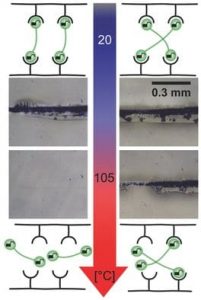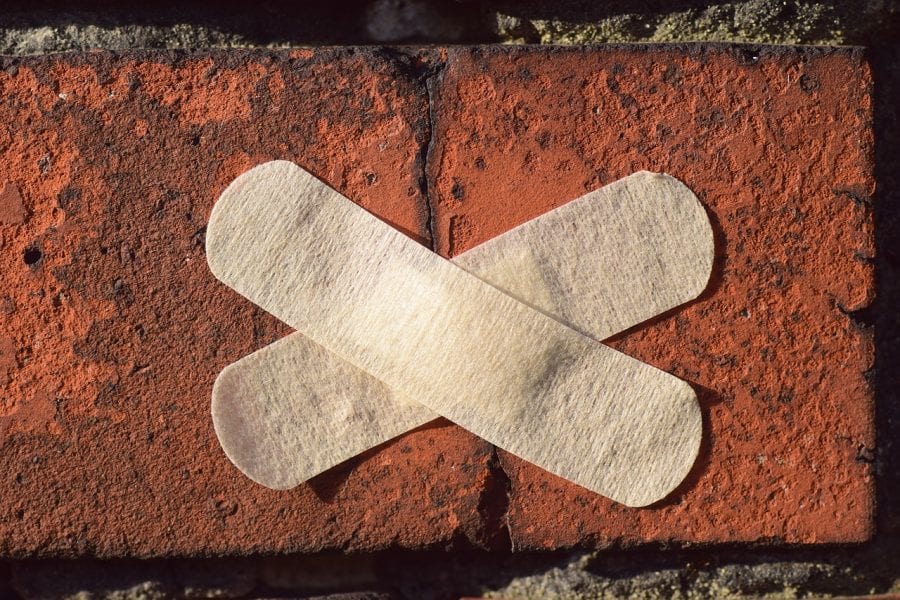To avoid the environmentally unfriendly and expensive replacement of damaged consumer products, researchers are focusing on the development of smart materials able to (self)repair scratches or cracks. In polymer coatings, heating can induce a chemical reaction that leads to a homogeneous flow of the protective layer and thus enables complete mending. The healed polymer re-hardens upon cooling and adopts its original robust structure as well as its earlier mechanical properties. However, the relatively high temperatures required for healing can lead to stepwise degradation of the material when applied repeatedly. To circumvent this drawback, a team of researchers at the Humboldt-University in Berlin recently developed a prototype of a smart, light-controllable polymer coating that enables thermal healing only in defined damaged locations without affecting the non-damaged parts. Light serves as a true remote control to switch the ability to repair ‘on’ or ‘off’ on demand.
scratches or cracks. In polymer coatings, heating can induce a chemical reaction that leads to a homogeneous flow of the protective layer and thus enables complete mending. The healed polymer re-hardens upon cooling and adopts its original robust structure as well as its earlier mechanical properties. However, the relatively high temperatures required for healing can lead to stepwise degradation of the material when applied repeatedly. To circumvent this drawback, a team of researchers at the Humboldt-University in Berlin recently developed a prototype of a smart, light-controllable polymer coating that enables thermal healing only in defined damaged locations without affecting the non-damaged parts. Light serves as a true remote control to switch the ability to repair ‘on’ or ‘off’ on demand.
Based on their initial concept, Anne Fuhrmann, Kevin Broi, and Stefan Hecht have now developed a 2 generation material with improved thermal healing properties to further prolong its lifetime. In this latest work, the researchers adjusted the architecture of the polymer networks by combining new difunctional crosslinkers with various polymethacrylates and comparing their performance with the initially employed tetrafunctional crosslinker. The new difunctional crosslinkers changed the crosslinking density, resulting in lower healing temperatures of their materials. Improving the design of such polymeric architectures paves the way to future applications where heat and light as external stimuli are necessary to control properties of smart materials and devices thereof.

















